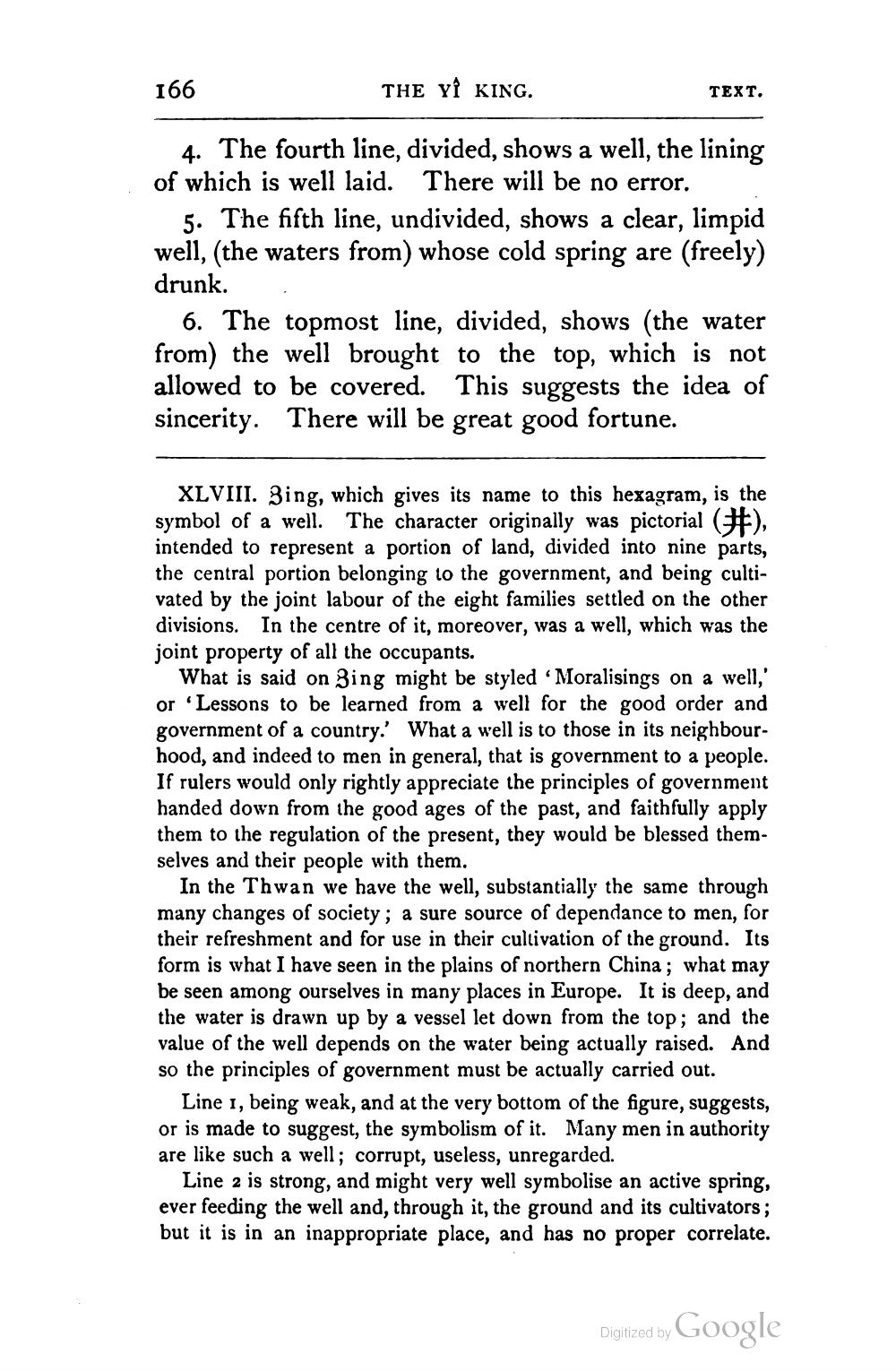________________
166
THE YÎ KING.
TEXT.
4. The fourth line, divided, shows a well, the lining of which is well laid. There will be no error.
5. The fifth line, undivided, shows a clear, limpid well, (the waters from) whose cold spring are (freely)
drunk.
6. The topmost line, divided, shows the water from) the well brought to the top, which is not allowed to be covered. This suggests the idea of sincerity. There will be great good fortune.
XLVIII. Zing, which gives its name to this hexagram, is the symbol of a well. The character originally was pictorial (), intended to represent a portion of land, divided into nine parts, the central portion belonging to the government, and being cultivated by the joint labour of the eight families settled on the other divisions. In the centre of it, moreover, was a well, which was the joint property of all the occupants.
What is said on Zing might be styled 'Moralisings on a well,' or Lessons to be learned from a well for the good order and government of a country.' What a well is to those in its neighbourhood, and indeed to men in general, that is government to a people. If rulers would only rightly appreciate the principles of government handed down from the good ages of the past, and faithfully apply them to the regulation of the present, they would be blessed themselves and their people with them.
In the Thwan we have the well, substantially the same through many changes of society; a sure source of dependance to men, for their refreshment and for use in their cultivation of the ground. Its form is what I have seen in the plains of northern China; what may be seen among ourselves in many places in Europe. It is deep, and the water is drawn up by a vessel let down from the top; and the value of the well depends on the water being actually raised. And so the principles of government must be actually carried out.
Line 1, being weak, and at the very bottom of the figure, suggests, or is made to suggest, the symbolism of it. Many men in authority are like such a well; corrupt, useless, unregarded.
Line 2 is strong, and might very well symbolise an active spring, ever feeding the well and, through it, the ground and its cultivators; but it is in an inappropriate place, and has no proper correlate.
Digitized by Google




